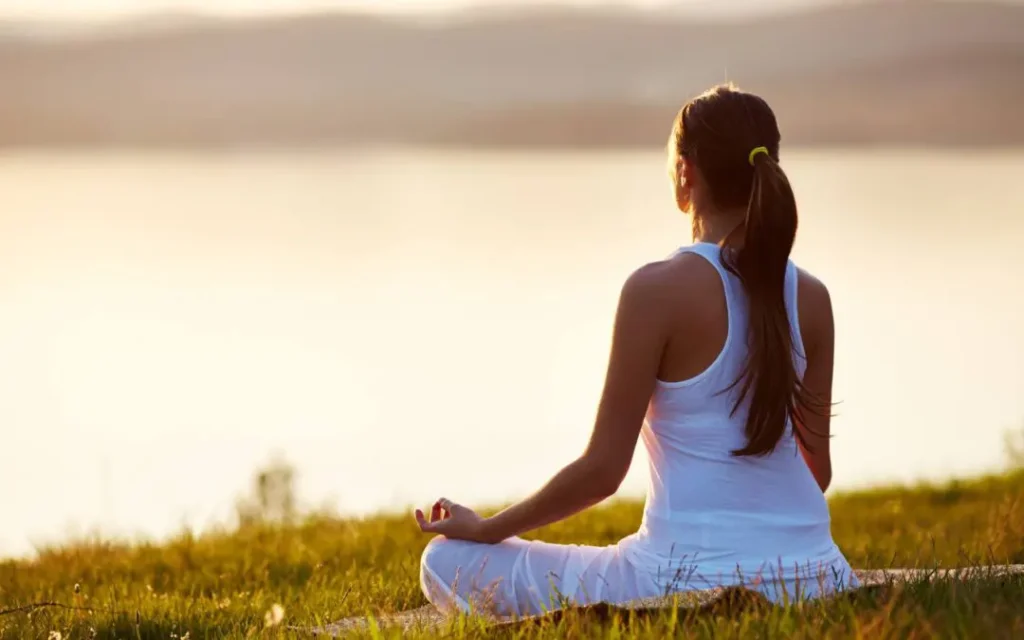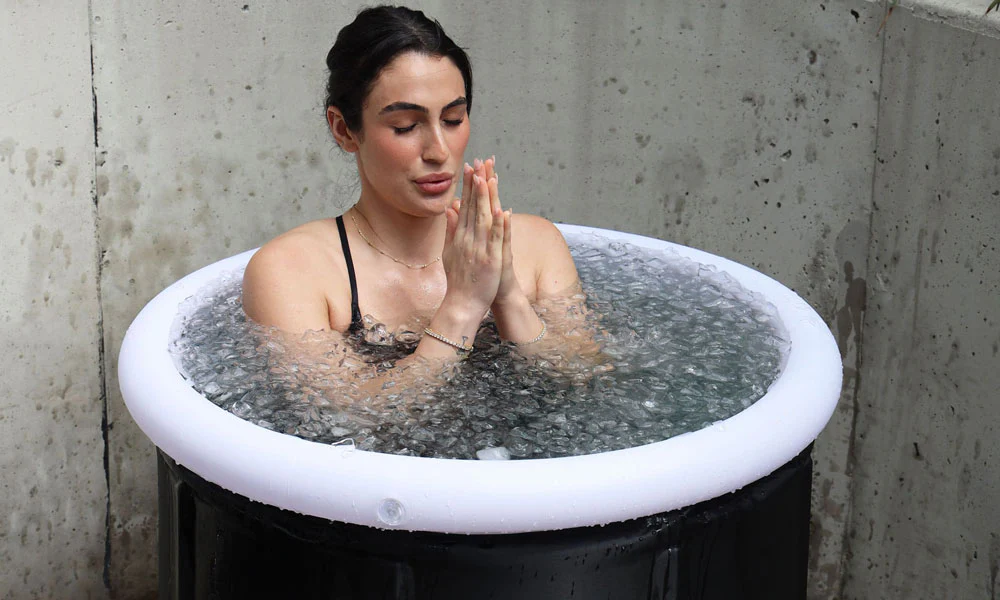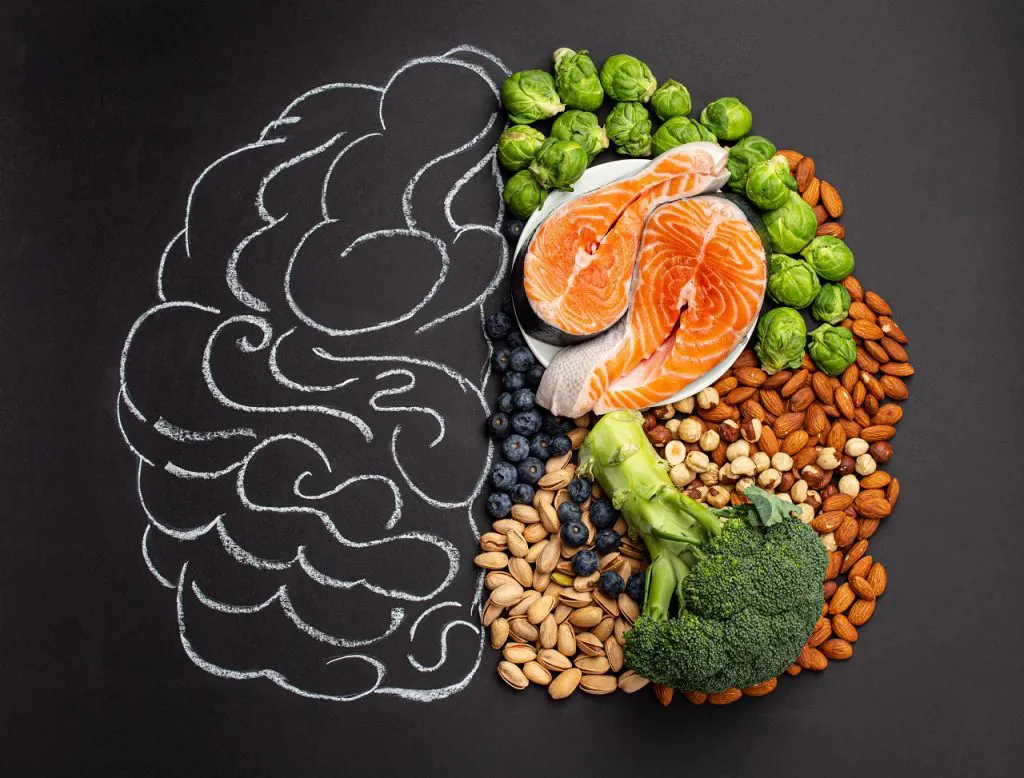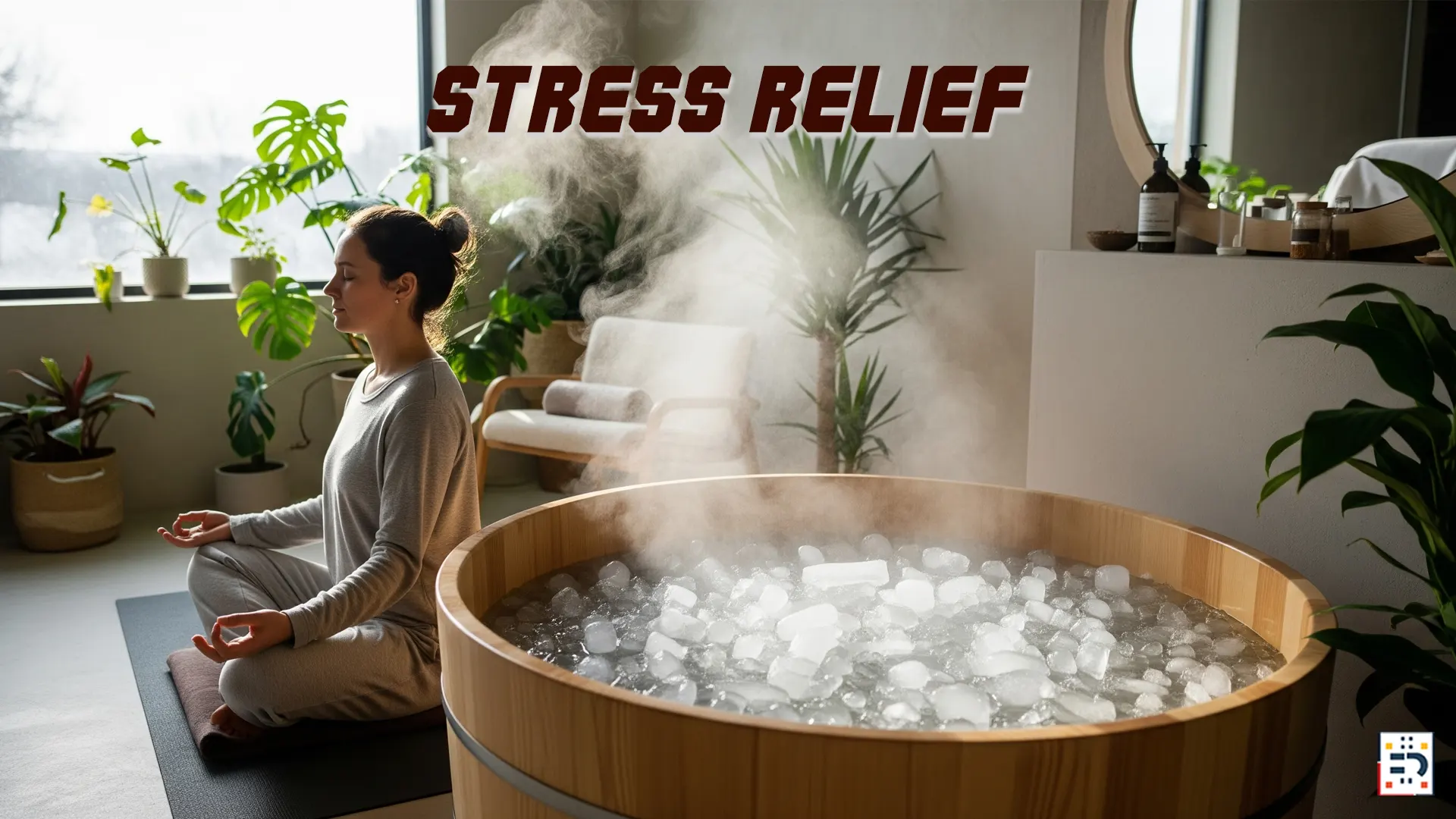Are you among the 75% of Americans who experience physical symptoms of stress regularly? If daily pressures leave you feeling overwhelmed, you’re not alone. Chronic stress affects over 77% of people in the United States, contributing to everything from heart disease to anxiety disorders.
The good news? Science has identified powerful, natural stress relief techniques that can dramatically improve your quality of life. From ancient meditation practices to modern cold therapy, this comprehensive guide explores 9 evidence-based methods for managing stress naturally.
Understanding Stress: Why 44% of Americans Feel More Stressed Than 5 Years Ago
Stress in America has reached epidemic levels. The American Psychological Association’s 2024 Stress in America report reveals alarming trends:
- 73% of Americans experience psychological symptoms of stress
- 77% report physical symptoms from stress
- 48% say stress negatively impacts their professional life
- Chronic stress costs the US economy over $190 billion annually in healthcare
The Fight-or-Flight Response: Your Body on Stress
When you encounter stressors—whether it’s work deadlines, financial concerns, or traffic jams—your sympathetic nervous system activates the fight-or-flight response. This triggers:
- Cortisol and adrenaline release
- Increased heart rate and blood pressure
- Muscle tension and shallow breathing
- Suppressed immune and digestive functions
While this response helped our ancestors survive immediate threats, modern chronic stress keeps these systems constantly activated, leading to serious health consequences.
The solution? Activating your parasympathetic nervous system—the “rest and digest” response that promotes healing and recovery.
Meditation for Stress Relief: The #1 Scientifically-Proven Method
Meditation ranks as the most researched stress relief technique, with over 17,000 studies demonstrating its effectiveness. Regular meditation practice can reduce stress by up to 40% while providing lasting benefits for both mental and physical health.
The Neuroscience Behind Meditation’s Stress-Fighting Power
Harvard Medical School research shows that just 8 weeks of meditation creates measurable brain changes:
- 25% reduction in amygdala reactivity (your brain’s stress center)
- Increased gray matter in areas controlling emotional regulation
- Improved prefrontal cortex function for better decision-making
- Enhanced hippocampus density for better memory and learning

Top 5 Types of Meditation for Stress Management
1. Mindfulness Meditation – Best for Beginners
- Time needed: 10-20 minutes daily
- Stress reduction: Up to 58% decrease in anxiety symptoms
- Best for: General stress, worry, and overwhelm
2. Transcendental Meditation (TM) – Clinically Proven
- Time needed: 20 minutes, twice daily
- Stress reduction: 32% reduction in cardiovascular disease risk
- Best for: High blood pressure, heart disease prevention
3. Loving-Kindness Meditation – Emotional Healing
- Time needed: 15-30 minutes
- Stress reduction: 42% improvement in PTSD symptoms
- Best for: Relationship stress, emotional trauma
4. Body Scan Meditation – Physical Stress Relief
- Time needed: 15-45 minutes
- Stress reduction: 67% improvement in chronic pain
- Best for: Physical tension, insomnia
5. Walking Meditation – Active Stress Relief
- Time needed: 10-30 minutes
- Stress reduction: 71% improvement in mood scores
- Best for: Restless minds, outdoor enthusiasts
Getting Started with Meditation: A Beginner’s Guide
Week 1-2: Start with 5 minutes daily using guided apps like Headspace or Calm Week 3-4: Increase to 10 minutes daily with unguided practice Month 2+: Build up to 20 minutes for optimal stress relief benefits
Pro Tip: Morning meditation provides all-day stress protection, while evening sessions improve sleep quality.
Breathwork for Stress: Instant Relief Techniques That Work in Minutes
Breathwork offers the fastest natural stress relief available—literally changing your nervous system state in 30 seconds to 2 minutes. These techniques require no equipment and can be done anywhere.
The Science of Breathing for Stress Relief
Your vagus nerve—the longest nerve in your body—directly connects breathing to stress response. Specific breathing patterns can:
- Activate parasympathetic nervous system in under 60 seconds
- Reduce cortisol levels by up to 68%
- Lower blood pressure by 10-20 points
- Improve heart rate variability (a key stress resilience marker)

5 Proven Breathwork Techniques for Immediate Stress Relief
1. 4-7-8 Breathing – The Natural Tranquilizer
How to do it:
- Inhale through nose for 4 counts
- Hold breath for 7 counts
- Exhale through mouth for 8 counts
- Repeat 4 cycles
Results: 89% of users report feeling calmer within 2 minutes Best for: Anxiety, insomnia, panic attacks
2. Box Breathing – Navy SEAL Technique
How to do it:
- Inhale for 4 counts
- Hold for 4 counts
- Exhale for 4 counts
- Hold empty for 4 counts
Results: Used by elite military units for stress management under pressure Best for: Performance anxiety, focus improvement
3. Coherent Breathing – Heart Rate Variability Optimizer
How to do it:
- Breathe in and out for equal 5-second counts
- Continue for 10-20 minutes
Results: 156% improvement in heart rate variability after 4 weeks Best for: Long-term stress resilience building
4. Bellows Breath – Energizing Stress Relief
How to do it:
- Rapid, shallow breaths through nose (like a bellows)
- 30 seconds to 2 minutes maximum
- Return to normal breathing
Results: Increases alertness while reducing stress hormones Best for: Fatigue-related stress, mental fog
5. Three-Part Breath – Full-Body Relaxation
How to do it:
- Breathe into belly (count 1)
- Continue into ribs (count 2)
- Fill upper chest (count 3)
- Reverse the exhale
Results: 73% reduction in physical tension after 5 minutes Best for: Physical stress symptoms, muscle tension
Cold Therapy for Stress: Ice Baths, Cold Showers, and Stress Resilience
Cold exposure therapy has exploded in popularity among Americans seeking natural stress relief. From Wim Hof Method enthusiasts to biohacking communities, cold therapy offers unique stress management benefits backed by compelling research.
The Science Behind Cold Therapy and Stress Relief
Cold exposure triggers a controlled stress response that actually builds stress resilience:
- 530% increase in norepinephrine (natural focus enhancer)
- 29% reduction in sick days (improved immune function)
- 250% increase in dopamine lasting up to 3 hours
- Significant reduction in depression and anxiety symptoms

Cold Therapy Methods: From Beginner to Advanced
Level 1: Cold Showers – Accessible for Everyone
Protocol:
- End regular shower with 30-90 seconds of cold water (50-60°F)
- Gradually increase duration over 2-4 weeks
- Focus on controlled breathing during exposure
Benefits: Improved mood, increased energy, enhanced stress tolerance Cost: $0 (uses existing shower)
Level 2: Ice Baths – Enhanced Benefits
Protocol:
- Water temperature: 50-59°F (10-15°C)
- Duration: 10-15 minutes
- Frequency: 2-3 times per week
Benefits: Faster recovery, reduced inflammation, improved mental resilience Cost: $50-200 for home setup
Level 3: Cryotherapy – Professional Treatment
Protocol:
- Temperature: -200°F to -250°F (-129°C to -157°C)
- Duration: 2-4 minutes
- Frequency: 1-3 times per week
Benefits: Maximum anti-inflammatory effects, rapid stress relief Cost: $30-90 per session
Cold Therapy Safety Guidelines
Important: Always consult healthcare providers before starting cold therapy, especially if you have:
- Heart conditions
- High blood pressure
- Pregnancy
- Autoimmune disorders
Start slowly and listen to your body—cold therapy should be challenging but never dangerous.
Exercise for Stress Relief: Movement as Natural Medicine
Regular exercise provides some of the most powerful and long-lasting stress relief benefits available. The CDC recommends at least 150 minutes of moderate exercise weekly for optimal stress management and overall health.
How Exercise Fights Stress: The Scientific Mechanisms
Physical activity combats stress through multiple pathways:
- Endorphin release (natural mood elevators)
- BDNF increase (brain-derived neurotrophic factor) for neuroplasticity
- Cortisol regulation and improved stress hormone balance
- Improved sleep quality and recovery
- Enhanced self-confidence and body image
Best Types of Exercise for Stress Relief
Aerobic Exercise – The Stress-Busting Champion
Recommended activities:
- Brisk walking (30 minutes daily)
- Swimming (3 times per week)
- Cycling (45 minutes, 3 times per week)
- Dancing (45-60 minutes, 2-3 times per week)
Stress relief benefits: Up to 68% reduction in perceived stress levels
Strength Training – Build Physical and Mental Resilience
Recommended protocol:
- 2-3 sessions per week
- Focus on compound movements
- 45-60 minutes per session
Stress relief benefits: 40% improvement in anxiety symptoms, increased confidence
Yoga – Mind-Body Stress Relief
Most effective styles for stress:
- Hatha Yoga (gentle, beginner-friendly)
- Restorative Yoga (deep relaxation focus)
- Vinyasa Yoga (flowing movements with breath)
Stress relief benefits: 50% reduction in cortisol levels after 8 weeks
High-Intensity Interval Training (HIIT) – Efficient Stress Relief
Protocol:
- 20-30 minutes per session
- 2-3 times per week
- Alternate high-intensity bursts with recovery periods
Stress relief benefits: Improved stress resilience and time-efficient results
Creating Your Exercise-Based Stress Relief Plan
Week 1-2: Start with 20 minutes of walking daily Week 3-4: Add 2 strength training sessions weekly Week 5+: Incorporate preferred activities for long-term adherence
Remember: The best exercise for stress relief is the one you’ll do consistently.
Nature Therapy: Forest Bathing and Outdoor Stress Relief
Nature therapy, also known as “forest bathing” or ecotherapy, offers profound stress relief benefits that go far beyond simple relaxation. With Americans spending 93% of their time indoors, reconnecting with nature provides essential stress relief.
The Science of Nature’s Stress-Fighting Power
Forest bathing research from Japan shows remarkable results:
- 50% reduction in cortisol levels after 2 hours in nature
- 16% decrease in stress hormone production
- 1.4% increase in natural killer cell activity (immune boost)
- Significant improvements in mood and energy levels
Phytoncides—natural compounds released by trees—appear to directly benefit human health when inhaled.

Types of Nature Therapy for Stress Relief
Forest Bathing – Immersive Nature Experience
Protocol:
- Spend 2-4 hours in forested areas
- Focus on sensory awareness (sight, sound, smell, touch)
- Minimal talking or digital device use
- Mindful walking or sitting meditation
Outdoor Exercise – Active Nature Therapy
Activities:
- Hiking on nature trails
- Outdoor yoga or tai chi
- Gardening or yard work
- Beach walking or swimming
Nature Meditation – Combining Practices
Techniques:
- Tree meditation (sitting against or near trees)
- Water meditation (near streams, lakes, or oceans)
- Sky gazing and cloud watching
- Nature sound meditation
Making Nature Therapy Accessible
Urban nature options:
- City parks and green spaces
- Botanical gardens
- Riverside or lakefront areas
- Rooftop gardens
Indoor nature alternatives:
- Houseplants (especially air-purifying varieties)
- Nature sounds and recordings
- Natural light exposure through windows
- Nature photography and videos
Tip: Even 5 minutes of nature exposure can provide measurable stress relief benefits.
Sleep Optimization for Stress Management
Quality sleep serves as the foundation of effective stress management, yet 35% of Americans report insufficient sleep regularly. Poor sleep creates a vicious cycle—stress disrupts sleep, and sleep deprivation increases stress vulnerability.
The Sleep-Stress Connection: Why Rest Is Essential
During sleep, your body and brain:
- Process and consolidate stressful experiences
- Clear metabolic waste through the glymphatic system
- Restore neurotransmitter balance for emotional regulation
- Repair stress-related cellular damage
- Strengthen immune function compromised by stress

Sleep Optimization Strategies for Better Stress Resilience
Sleep Hygiene Fundamentals
Timing:
- Consistent sleep schedule (same bedtime and wake time daily)
- 7-9 hours of sleep nightly for optimal stress recovery
- Avoid screens 1-2 hours before bedtime
Environment:
- Cool temperature (65-68°F optimal)
- Complete darkness or blackout curtains
- White noise or earplugs for sound control
- Comfortable mattress and pillows
Pre-Sleep Stress Relief Routine
60 minutes before bed:
- Warm bath with Epsom salts (magnesium for relaxation)
- Gentle stretching or restorative yoga
- Reading (physical books, not screens)
- Journaling to process daily stress
30 minutes before bed:
- Progressive muscle relaxation
- Breathing exercises (4-7-8 technique)
- Gratitude practice (3 things you’re thankful for)
- Essential oils (lavender, chamomile)
Sleep Supplements for Stress Relief
Natural options (consult healthcare providers first):
- Magnesium glycinate (200-400mg, 1 hour before bed)
- Melatonin (0.5-3mg, 30 minutes before bed)
- L-theanine (100-200mg for relaxation)
- Valerian root (300-600mg traditional dose)
Tracking Sleep for Better Stress Management
Sleep tracking tools:
- Wearable devices (Apple Watch, Fitbit, Oura Ring)
- Smartphone apps (Sleep Cycle, Pillow)
- Sleep diary for pattern recognition
Key metrics to monitor:
- Total sleep duration
- Sleep onset time
- Number of awakenings
- Morning mood and energy levels
Social Support: Building Stress-Resilient Communities
Strong social connections provide some of the most powerful protection against stress available. Research consistently shows that people with robust social support networks have lower cortisol levels, better immune function, and greater stress resilience.
The Biology of Social Support and Stress Relief
Social connection triggers biological changes that directly counteract stress:
- Oxytocin release (the “bonding hormone”) reduces cortisol
- Decreased inflammation markers throughout the body
- Enhanced immune function and disease resistance
- Improved cardiovascular health and longevity
Harvard’s Grant Study, following subjects for over 80 years, found that relationship quality was the strongest predictor of life satisfaction and stress resilience.
Building Your Stress-Support Network
Quality Over Quantity Approach
Research shows you need just 3-5 close relationships for optimal stress protection:
- 1-2 intimate relationships (spouse, partner, best friend)
- 2-3 close friendships for emotional support
- Several casual relationships for social engagement
Types of Social Support for Stress Relief
Emotional support:
- Active listening and empathy
- Validation of feelings and experiences
- Encouragement during difficult times
Instrumental support:
- Practical help with tasks and responsibilities
- Financial assistance when needed
- Childcare or eldercare support
Informational support:
- Advice and guidance for problem-solving
- Sharing relevant resources and knowledge
- Professional or expert connections
Companionship support:
- Shared activities and interests
- Social inclusion and belonging
- Fun and laughter for stress relief
Practical Ways to Build Social Support
Introverts:
- Online communities related to your interests
- Small group activities (book clubs, hobby groups)
- One-on-one connections rather than large gatherings
- Volunteering for causes you care about
Extroverts:
- Community organizations and clubs
- Group fitness classes or sports teams
- Social meetups and networking events
- Hosting gatherings and social events
Busy Professionals:
- Workplace relationships and mentorship
- Industry associations and professional groups
- Lunch meetings and coffee connections
- Virtual social time with distant friends/family
Remember: Building social support takes time and consistent effort, but the stress relief benefits are substantial and long-lasting.
Nutrition for Stress Relief: Foods That Fight Stress
What you eat directly impacts your body’s ability to handle stress. Certain nutrients support nervous system function and stress hormone regulation, while others can exacerbate stress responses and inflammation.

Stress-Fighting Nutrients and Foods
Omega-3 Fatty Acids – Natural Anti-Inflammatory
Benefits: Reduce inflammation, support brain health, lower cortisol Best sources:
- Fatty fish (salmon, mackerel, sardines): 2-3 servings weekly
- Walnuts (1 oz daily)
- Chia seeds (1-2 tablespoons daily)
- Flaxseeds (ground, 1-2 tablespoons daily)
Magnesium – The Relaxation Mineral
Benefits: Calms nervous system, reduces muscle tension, improves sleep Best sources:
- Dark leafy greens (spinach, Swiss chard)
- Nuts and seeds (almonds, pumpkin seeds)
- Dark chocolate (70% cacao or higher)
- Avocados and bananas
B Vitamins – Stress Hormone Regulators
Benefits: Support neurotransmitter production, energy metabolism Best sources:
- B6: Chickpeas, tuna, salmon, poultry
- B12: Nutritional yeast, fish, eggs, dairy
- Folate: Legumes, asparagus, broccoli, citrus
Vitamin C – Stress Recovery Support
Benefits: Adrenal gland support, immune function, cortisol regulation Best sources:
- Citrus fruits (oranges, grapefruits, lemons)
- Berries (strawberries, blueberries, acai)
- Bell peppers and broccoli
- Kiwi fruit and papaya
Adaptogenic Foods and Herbs for Stress Relief
Adaptogens help your body adapt to and recover from stress more effectively:
Ashwagandha
- Dosage: 300-600mg daily
- Benefits: 30% reduction in cortisol levels
- Best for: Chronic stress, anxiety, sleep issues
Rhodiola Rosea
- Dosage: 200-400mg daily
- Benefits: Improved mental performance under stress
- Best for: Fatigue-related stress, cognitive function
Holy Basil (Tulsi)
- Dosage: 300-600mg daily or tea form
- Benefits: Cortisol regulation, mood support
- Best for: Emotional stress, mood swings
Ginseng
- Dosage: 100-400mg daily
- Benefits: Enhanced stress resilience, energy support
- Best for: Physical and mental fatigue
Foods to Limit for Better Stress Management
High-sugar foods:
- Cause blood sugar spikes and crashes
- Increase cortisol production
- Worsen anxiety and mood swings
Excessive caffeine:
- More than 400mg daily (4 cups coffee) can increase anxiety
- Disrupts sleep quality
- Enhances stress hormone production
Processed foods:
- High in inflammatory ingredients
- Lack stress-fighting nutrients
- Can worsen mood and energy levels
Alcohol:
- Disrupts sleep patterns
- Increases cortisol over time
- Interferes with stress recovery
Sample Daily Stress-Fighting Meal Plan
Breakfast:
- Greek yogurt with berries, walnuts, and chia seeds
- Green tea or matcha
Lunch:
- Spinach salad with salmon, avocado, and pumpkin seeds
- Whole grain roll
Snack:
- Dark chocolate (1 oz) with almonds
- Herbal tea (chamomile or tulsi)
Dinner:
- Grilled chicken or tofu with roasted vegetables
- Sweet potato and quinoa
- Side of sauerkraut or kimchi (probiotics for gut-brain health)
Creating Your Personalized Stress Relief Plan
Effective stress management requires a personalized approach that fits your lifestyle, preferences, and specific stressors. Research shows that people who use multiple stress relief techniques experience 65% greater stress reduction than those using single methods.
Step 1: Assess Your Current Stress Levels
Stress Assessment Questions:
- How often do you feel overwhelmed? (Daily/Weekly/Monthly/Rarely)
- What are your top 3 stress triggers?
- What physical symptoms do you experience? (Headaches, tension, fatigue, etc.)
- How is stress affecting your sleep, relationships, and work performance?
- What stress relief methods have you tried before?
Stress Level Scoring:
- Low stress (1-3): Occasional stress with minimal impact
- Moderate stress (4-6): Regular stress affecting daily life
- High stress (7-8): Chronic stress significantly impacting health/relationships
- Severe stress (9-10): Overwhelming stress requiring professional support
Step 2: Choose Your Primary Stress Relief Methods
Based on your assessment, select 2-3 primary techniques:
Busy Professionals:
- Breathwork (can be done anywhere, anytime)
- Brief meditation (10-minute morning routine)
- Cold showers (energizing morning practice)
Parents and Caregivers:
- Walking meditation (can include children)
- Evening yoga (after kids are in bed)
- Nature therapy (family outdoor activities)
Students:
- Study break breathing exercises
- Campus gym workouts
- Social study groups for support
Retirees:
- Longer meditation practices
- Gardening as nature therapy
- Social community involvement
Step 3: Create Your Daily Stress Relief Schedule
Morning Routine (10-20 minutes):
Choose 1-2 practices:
- 5-10 minutes meditation
- Cold shower finish (30-90 seconds)
- Gratitude journaling (3 items)
- Energizing breathwork (5 minutes)
Midday Reset (5-15 minutes):
For work breaks:
- 4-7-8 breathing (2 minutes)
- Brief walk outdoors (10 minutes)
- Progressive muscle relaxation (10 minutes)
- Mindful eating at lunch
Evening Wind-down (15-30 minutes):
For recovery and preparation:
- Gentle yoga or stretching
- Warm bath with Epsom salts
- Nature sounds meditation
- Stress-relief reading
Step 4: Weekly Stress Relief Activities
Plan 3-4 longer sessions weekly:
- Exercise sessions (45-60 minutes)
- Nature therapy (2-4 hours monthly)
- Social connections (regular friend/family time)
- Hobby time (creative or engaging activities)
Step 5: Track and Adjust Your Plan
Weekly Check-ins:
- Rate your stress levels (1-10 scale)
- Note which techniques felt most effective
- Identify any barriers to consistency
- Adjust timing or methods as needed
Monthly Reviews:
- Assess overall stress level improvements
- Add new techniques or modify existing ones
- Consider seasonal adjustments
- Celebrate progress and successes
Step 6: Building Long-term Stress Resilience
Progressive Development:
- Month 1-2: Establish daily routine consistency
- Month 3-4: Add weekly activities and social support
- Month 5-6: Experiment with advanced techniques
- Month 6+: Maintain and refine your optimal combination
Emergency Stress Relief Kit:
Always have quick techniques ready:
- 2-minute breathing exercise
- 5-minute walk outdoors
- Supportive friend’s phone number
- Calming music playlist
- Stress relief app on phone
Your Journey to Natural Stress Relief
Chronic stress doesn’t have to control your life. The scientific evidence is clear: natural stress relief techniques can dramatically improve your physical health, mental well-being, and overall quality of life.
Key Takeaways for Effective Stress Management:
- Start small and build consistency – even 5 minutes daily makes a difference
- Combine multiple techniques for maximum benefit
- Personalize your approach based on lifestyle and preferences
- Track progress to stay motivated and identify what works best
- Be patient – stress resilience builds gradually over time
The Science-Backed Path Forward
Whether you choose meditation for mental clarity, cold therapy for resilience building, exercise for mood enhancement, or nature therapy for restoration, each technique offers unique benefits supported by rigorous research.
Remember: The best stress relief technique is the one you’ll practice consistently. Start with what appeals to you most, and gradually build a comprehensive toolkit for lifelong stress resilience.
Your stress-free life begins with the first step you take today.
#StressReliefTechniques #NaturalStressManagement #MeditationForStress #StressReduction #AnxietyRelief #MindfulnessMatters #WellnessJourney #MentalHealthMatters #SelfCareRoutine #HealthyLiving


